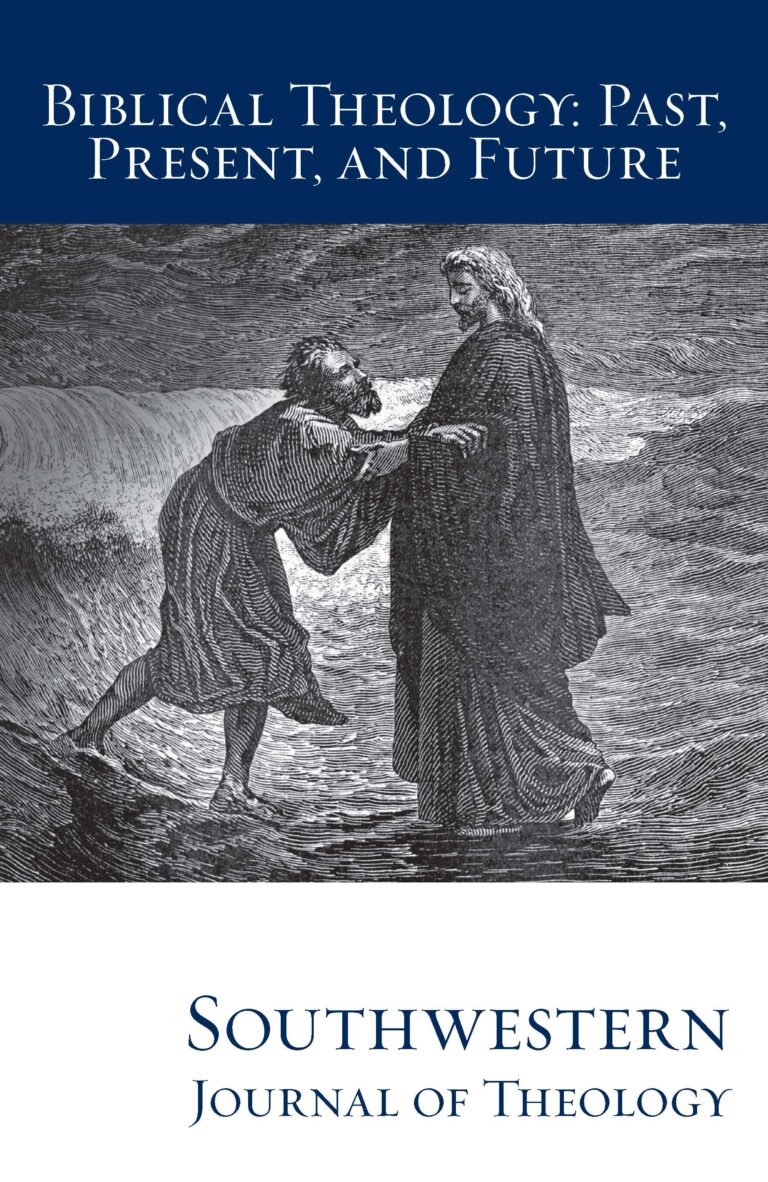
Biblical Theology: Past, Present, and Future (II)
Southwestern Journal of Theology
Volume 56, No. 1 – Fall 2013
Managing Editor: Terry L. Wilder
Edited by John Collins and Daniel C. Harlow. Grand Rapids: Eerdmans Publishing, 2010. 1397 pages. Hardcover, $95.00.
This is the first of its kind reference work that focuses on Second Temple Judaism. While the title says that it is a dictionary, it is not merely a source that provides definitions of terms. This is a synthetic research volume whose entries are major articles of the particular subject; complete with a review of the scholarly literature and issues, and a comprehensive bibliography. The dictionary consists of two parts: the first part contains major essays that make up 20% of the book. The second part contains 520 alphabetical entries.
The first part includes 13 major essays addressing issues and aspects of Judaism between the Hellenistic and the second century AD. The essays are, “Early Judaism in Modern Scholarship,” “Jewish history from Alexander to Hadrian,” “Judaism in the Land of Israel,” “Judaism in the Diaspora,” “The Jewish Scriptures: Texts, Versions, Canons,” “Early Jewish Biblical Interpretation,” “Apocrypha and Pseudepigrapha,” “Dead Sea Scrolls,” “Early Jewish Literature,” “Archaeology, Papyri, and Inscriptions,” “Jews among Greeks and Romans,” “Early Judaism and Early Christianity,” and “Early Judaism and Rabbinic Judaism.”
The second part contains the 520 entries. The entries focus on Second Temple Judaism in ancient Palestine, and the Diaspora. Emphasis is placed on entries that are important to Biblical studies, early Judaism, and history. Major topics include, “Primary Languages of Jews during the Second Temple period,” “Secondary Languages” (e.g., Armenian, Ethiopic), “Literary Genres,” “Biblical Texts, Versions, and Canon,” “Hebrew Bible,” “Apocrypha,” “Pseudepigrapha and Hellenistic Jewish Texts,” “Dead Sea Scrolls,” “Philo of Alexandria,” “Josephus,” “Greek and Latin Authors on Jews and Judaism,” “New Testament,” “Rabbinic Literature,” “Groups and Dynasties,” “Social, Political, Economic, and Cultural Life,” “Biblical Figures in Early Jewish Interpretation” (e.g. Abraham, Moses, Melchizedek), “Mythological and Primordial Figures, Places and Events” (includes Angels, Behemoth, Serpent, Sons of God), “Religious Beliefs and Influences, Practices” (including Asceticism, Burial Practices, Celibacy, Crucifixion, Intermarriage), “Religious Institutions,” “Jewish Revolts,” “Cities, Countries and Regions,” “Archaeology,” and “Modern Interpreters of Early Judaism.”
While the promotional literature states that many of the entries contain “cross-references,” a perusal of several articles shows that this is very minimal. For example, the entry on Jerusalem mentions miqva’ot (792) as spreading throughout Hasmonean Jerusalem, but it does not cross-reference the article on miqva’ot (924-256). This is also the case whenever there is an article on a major historical figure (e.g. Josephus, Paul) that does not have references to articles on that person’s writings. The entry for Qumran does reference the articles on Dead Sea Scrolls and Essenes but not any cross-listings for Josephus, Pottery, or Archaeology. While this type of cross-referencing would be cumbersome, perhaps indexes in the back would be beneficial to those using the dictionary. This would be especially valuable to those who are unfamiliar with the discipline of Early Judaism, but would use this dictionary as a valuable resource (e.g., students, scholars of New Testament or Early Church, pastors).
The field of Second Temple Judaism has emerged as a major discipline within scholarship and is only beginning to be explored by Christian scholars. While it has flourished as an auxiliary approach within history, rabbinic studies, and New Testament studies—it is now recognized as a stand alone discipline within the field of Biblical studies. This reference work provides an excellent introduction to what will be an important and viable aspect of Biblical studies, particularly historic Jesus studies, as well as the New Testament texts and early church fathers in their historic context and trajectory. The approach will be unique to seminary students and pastors. You will not find entries for Gospel or New Testament, but you will find each of the Gospels as well as the Jesus Movement and Jesus of Nazareth. Under the topic of Miracles and Miracle Workers there is no reference to the New Testament but a discussion of Miracles in Second Temple literature. While seminary students will initially find this dictionary difficult to use, once they are immersed in this field they will find that this dictionary will provide a wealth of data for study. One example is the entry on Beatitudes (4QBeatitudes) (434). While this entry is specifically focused on a Dead Sea Scroll found in Cave 4, the entry provides important data for this specific and unique literary form that was common in the Second Temple Period. Naturally, this is the same literary genre used by Jesus in the famous Sermon on the Mount and provides a reader with an important avenue of research for this text.
The list of contributors is a who’s who of scholars both Jewish and Christian, with 270 authors from 20 countries. The dictionary contains over 150 illustrations, maps, photos, drawings, and plans. The bibliographies are extensive and up-to-date making this an excellent starting point for research. This volume is important for seminary students and New Testament and Early church scholars. It places the writings of the early church and life and ministry of Jesus within its proper historical context. While it is theoretically a reference work, because of the extensive surveys and overviews, this can easily be utilized as a textbook for graduate studies. This volume should be the first consult in any research of the Second Temple Period. While it is focused on early Judaism, any student, faculty, and interested lay person will find this a valuable investment for their library.





